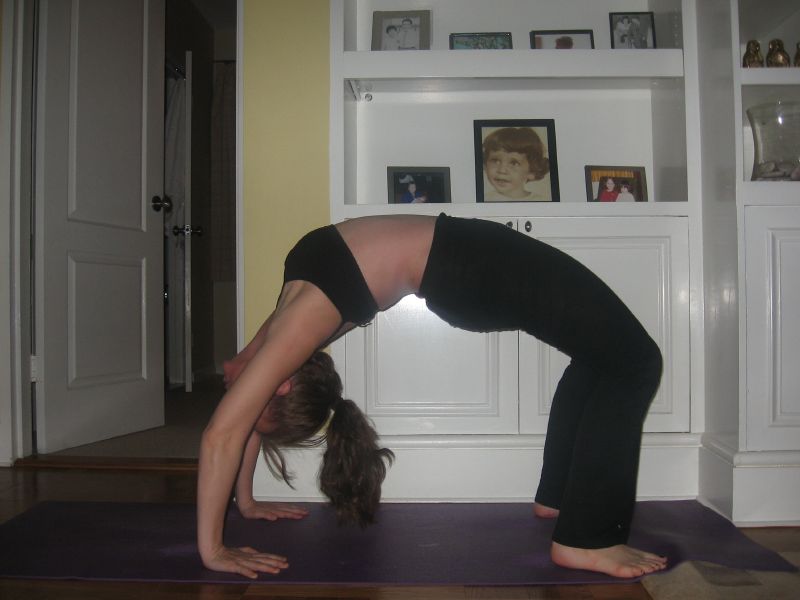Uttita Hasta Luego....WHAT???? The Dreaded Mariachi Band ..... WHO???? Excuse me...you want me to Grab My Own Ass-ana?
And who is this, "Johnny Sharasana" fellow that everyone keeps talking about?
Well....it was pointed out to me today, by one of my "yoga newbies"(I'm referring of course to my Intro to Yoga students at New York Yoga, and I am doing so with great fondness and affection, Beth, and anyone else who is reading this....)....that those who are not familiar with Ashtanga, may not know of what I speak when I refer to the dreaded Marichis (the dreaded Mariachi Bands?) or Kurmasana (Kermit the what?) or Garba Pindasana (Grab Your Own Ass-ana?) . So, if you would like to see all of the Ashtanga asanas (poses) illustrated one by one....check out the following site: Ashtanga Yoga Info Site - Germany
If you are curious about other poses that may or may not have anything to do with Ashtanga, then check out: Yoga Dancer: Asana Index
And while we are at it, I might as well just give you the lowdown on why we call them "asanas" in the first place...in case you don't already know....and yes, of course, I know that some of you DO - some of you probably taught it to me in the first place! Anyhoo...:
Asana means "seat"....(get it?...you sit on your ASSana?), which is how we refer to a "pose" in yoga. We take our "seat" in a pose by rooting with some part of our body (and lifting with some other part) and we find ourselves "sitting with it", much the way you might want to "sit with it" when you need to absorb some knowledge or you need to work through a problem in order to find some clarity.
Every name for every "pose" rhymes in yoga...simply because every "pose" is an "asana" and the word "asana" is used at the end of every word used to describe a pose....Thus, Sukkhasana
Sukkhasana means "Easy Pose" because "sukkha" means easy and "asana" means...well, you know. In Sanskrit, the last letter of sukkha gets blended into the first letter of asana. But the Sanskrit language is a whole 'nother story.
And Uttittha Hasta Padangusthasana means "Extended Hand to the Big Toe of the Foot Pose" because: Uttita="extended", Hasta= "hand", Pada= "foot", Angustha= "big toe" and Asana....well, you know....You put it all together and there you go....
The Marichiyasanas are the poses that are dedicated to the Sage Marichi....Thus, Marichi-asana.
Paschimo - means Western. So any pose beginning with "paschimo" will have something to do with the back of the body - the west side of the body, the body that is opposite to the rising sun when we wake up first thing in the morning and practice our sun salutations facing toward the east.....Thus, Paschimottanasana means Western Side of the Body Extended Stretch Pose because Paschimo=Western side of the body, Uttana= Extended (the "u" is dropped in favor of the "o" sound from Paschimo, in this case) and Asana, well, you know....
Vrtti means twisting or turning. Parsvo means side. So "Parivritti" means "twisting to the side", and any pose that is described as "Parivritti" or "Parivritta" (e.g. "Parivritta Parsva Konasana)means the version of that pose that includes a twist to one side. As such, Parivritta Parsva Konasana means Side Angle Pose Twisted to the Side (Kona means "angle"), or simply "Twisting side angle pose".
Ardha means "half". So anything with an "ardha" means half of something...Thus, Ardha Baddha Padma Paschimottanasana means Half Bound Lotus Western Side of the Body Extended Stretch Pose (Baddha means "bound"and Padma means "lotus")
And then there's always Tri-Anga-Mukkha-Eka-Pada- Paschimottanasana....Tri=three, Anga=limb, Mukkhai=facing as in Urdhva Mukkha Svanasana, or Upward FACING D0g), Eka=One...and by now you know the rest.....Thus we have: Three limbs (two arms one leg, and a leg that is folded back), Facing One Leg (your upper body folds over your outstretched leg) Stretch of the Western Side of the Body Pose.
NOW...do you have any doubt that it is just sooooooooooooooooooooo much easier to use the Sanskrit than to try to describe or even name the poses in English?
YC
P.S. That fellow, "Johnny Sharasana" is actually "Janu Sirsasana", which means "Knee-Head Pose" (Janu meaning Knee and Sirsa meaning Head).
:)








No comments:
Post a Comment